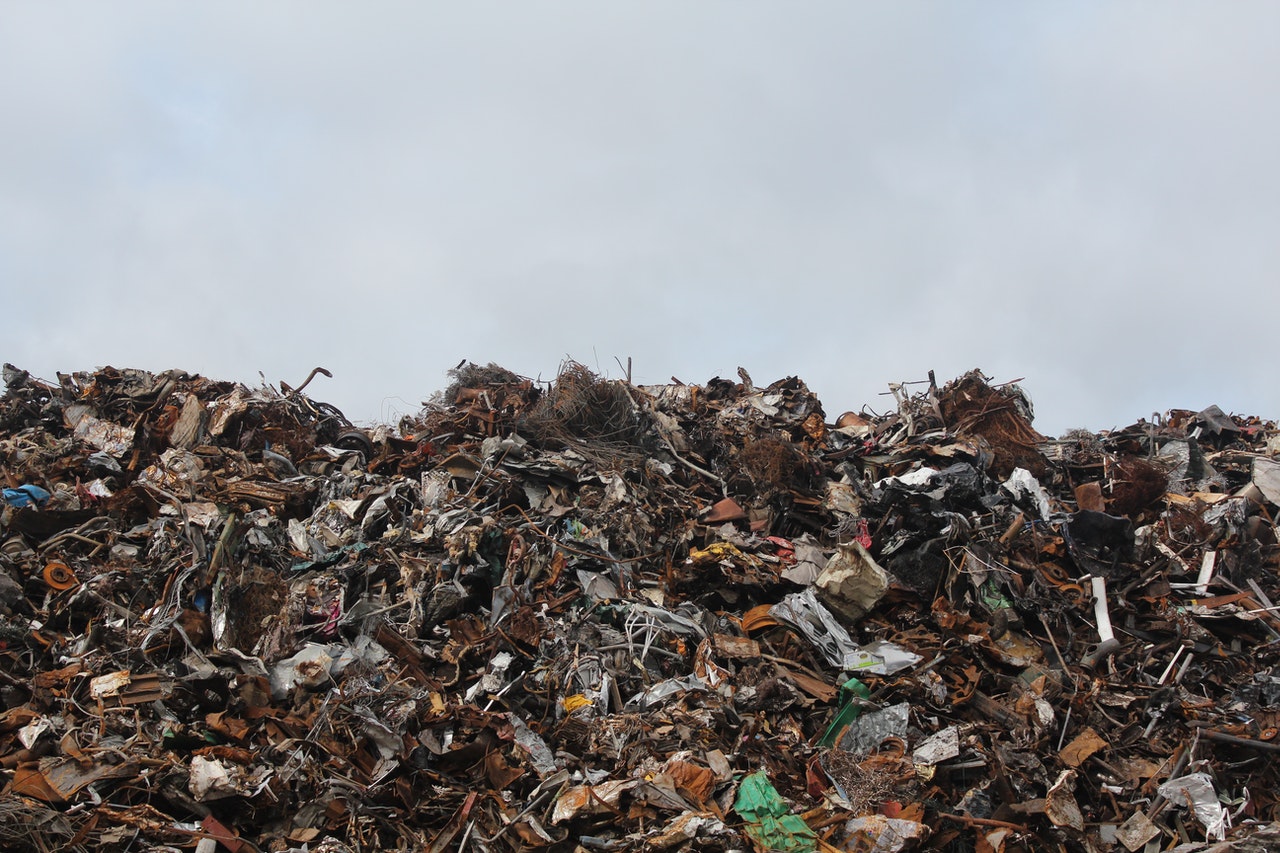
Kenya’s E- Waste Management strategy
By Ian Njathi
(LL.B., LLM, Dip in Law)
UNEP estimates the current e-waste generated annually in Kenya at 11,400 tonnes from refrigerators, 2,800 tonnes from TVs, 2,500 tonnes from personal computers, 500 tonnes from printers and 150 tonnes from mobile phones. Due to a lack of adequate or efficient regulatory framework, electronic devices end up in the same waste dumps as other solid waste materials this in turn exacerbates the pollution of the environment by introducing harmful and/ or toxic substances to the places where the electronic products are dumped.
The lack of separation of electronic devices from other waste materials presents a hurdle towards environmentally sound management practices whereby the electronic waste presents a danger to health and environment as a result of the hazardous substances contained in such devices.
Taking cognizance of the rising e-waste predicament in the country, the Government through the National Environmental Management Authority (NEMA) formulated draft Environmental Management and Coordination (E-Waste Management) Regulations of 2013 (Draft E-waste Regulations).
The E-waste Regulations were formulated to provide a legal and institutional framework and management mechanism on e-waste handling, collection, transportation, recycling and safe disposal. Additionally, the use of electronic and electrical appliances is necessary across all sectors, however, the resulting e-waste has to be addressed in order to strike a balance between environmental conservation and development in-line with the principles of sustainable development.
Environmental Management and Coordination (E-Waste Management) Regulations of 2013
The draft E-Waste Regulations were formulated to address the rising concern of the harm caused by electronic and electric devices waste on the environment and were guided by the Guidelines for E-waste Management in Kenya.
The Guidelines were first published in 2010 by NEMA following the need for a national coordination in the management of e-waste in the country as well as placing a responsibility on manufacturers of specific products to bear costs related to collection and disposal of waste associated with their respective products.
The guidelines were developed to streamline the collection and disposal of e-waste, create a comprehensive awareness among stakeholders to build capacity in handling and disposing e-waste in the country and also to identify the various types of e-waste and mode of handling, transporting, sorting, treatment, recycling, re-use and disposal.
Additionally, the government acknowledged that although the use of electronic and electric appliances is necessary across all sectors there was a need to address the rising e-waste concerns in order to strike a balance on environmental conservation and development in line with principles of sustainable development.
Strategies proposed under the E-waste Regulations to tackle and manage e-waste in the country
The E-waste Regulations were designed to ensure that there was enough clarity and guidance on how to handle and manage e-waste not just on the part of the government but also on producers of electrical and electronic products and as such the regulations provide for certain strategies to handle e-waste in the country.
i) Producer Registration
Key among the strategies of the regulations, is the provision of registration of producers by NEMA and this includes any party who intends to introduce new or used electrical and electronic equipment into the market.
Following this, NEMA may then accept or reject the application for registration made by the producers. Should they reject the application for registration, the aggrieved party has a right to appeal to the National Environmental Tribunal within 60 days of such rejection.
Additionally, NEMA is in charge of keeping and maintaining the Register on Electrical and Electronic equipment producers which such register shall be open to the public for perusal.
The regulations further provide for the issuance of an annual compliance certificate by producers which follows the producers declaring the previous year’s weight of electrical and electronic equipment introduced into the market, showing evidence of a licenced treatment facility for their products or a valid agreement with a licences treatment facility and payment of a prescribed fee.
This serves to ensure that the producers are compliant with the laid down law on e-waste handling and disposal and also serves to ensure that any producer not following the regulations is not issued with a licence to transact in electrical and electronic appliances
ii) Producer Responsibility
The Regulations outlines various responsibilities owed by the producers with regards to handling and managing e-waste. This serves to guide the producers of electrical and electronic products on how to handle and manage e-waste, for instance;
a) Every producer is required to declare to the Authority their previous year’s electrical and electronic products introduced to the market as well as projected imports of such products for subsequent years.
b) Producers are required to provide information to recyclers on how to dismantle their product at the end of life and the location of any hazardous substances or items within the product.
c) Producers are required to support the financing of collection and treatment of electrical and electronic products by licenced treatment facilities and ensure effective take back and treatment of e-waste.
d) Furthermore, any producer or third party acting on behalf of the producer intending to establish an e-waste collection centre, is required to notify NEMA of the location and physical address of the treatment centre.
e) Additionally, every producer is required to ensure that e-waste returned under an individual take back scheme is not disposed of at a municipal disposal site/facility. Further to this the Producer must provide evidence of affiliation with a recycling facility, facilitate e-waste take back schemes as well as receiving, sorting and transfer of e-waste to recycling facilities and refurbishers.
iii) Electrical and Electronic Equipment Registry
The regulations provides for an Electrical and Electronic Equipment Registry for the purpose of receiving and determining applications for registration, issuance of certificates of registration and registration numbers as well as to calculate individual producer responsibility by market share.
The regulations propose that the Electrical and Electronic Equipment Registry be kept and maintained by NEMA and should include the tonnage and categories of e-waste collected and processed by licensed treatment facilities, the total tonnage and categories of electrical and electronic equipment placed on the market by producers and the status of compliance based on the percentage of obligation fulfilled.
iv) Licensing and Responsibilities of Recyclers
The regulations provide for the licensing of recyclers and additionally outlines their responsibilities with regard to handling e-waste. The regulation proposes that any person intending to establish an E-waste recycling facility must first obtain an Environmental Impact Assessment Licence in accordance to the Environmental Impact Assessment and Audit Regulations of 2003 in addition to obtaining an operating licence issued by NEMA as under the provisions of the Environmental Management and Coordination (Waste Management) Regulations.
Upon making an application to be a licenced recycler, NEMA will consider it and make a decision either to approve or reject and communicate the decision in writing within 21 days.
Should NEMA reject the application, the regulations provide that they must communicate their reasons for doing so and indicate the applicant’s right of appeal.
Responsibilities of Recyclers
The regulations with a view to ensure that recyclers follow the obligations laid down, proposes various responsibilities owed by the recyclers. For instance;
a) Recyclers are mandated to receive and dismantle waste electrical and electronic equipment into hazardous and non-hazardous components in an environmentally sound manner.
b) Secondly, the recyclers must ensure that the components that cannot be recycled locally are exported to countries with the right machinery.
c) Recyclers are mandated to collect and treat e-waste in the manner set out in the Guidelines for E-waste Management of 2010, standards set out in the Regulations and in the manner set out by a contractual agreement between a licenced facility and the producer.
d) Furthermore, recyclers are required to submit to the Electrical and Electronic Equipment Registry on a quarterly basis the quantities in weight by category of e-waste received, whole components refurbished for re-use, materials for recycling and recovery in the facility and precious metals recovered.
e) Recyclers are obligated to give priority to the refurbishment of used electrical and electronic equipment to increase its working life before dismantling for recycling purposes, material recovery or reprocessing.
Responsibilities of Generators and Refurbishers
A generator refers to any person whose activities produces e-waste or a person in possession or control of e-waste. A refurbisher on the other hand refers to any person who repairs, dismantles or reassembles electrical and electronic equipment to extend the working life of a product.
The regulators provide for responsibilities for both generators and refurbishers whereby generators are mandated to ensure that e-waste is segregated from other forms of waste and is taken to licenced refurbishers, collection centres or recyclers.
Refurbishers on the other hand are mandated to ensure that the resultant e-waste is transferred to a collection centre or to licenced recyclers. Additionally, refurbishers must ensure that e-waste is recycled in a facility licenced by NEMA.
Control and handling of E-waste
When it comes to controlling and handling e-waste, the regulations propose that NEMA has the mandate of establishing a mechanism to ensure collaboration with other African states on the importation of e-waste.
Additionally, the regulations propose that any e-waste that is imported into Kenya should be for the purpose of recycling, refurbishment and material recovery.
Furthermore, the regulations propose that any person intending to import e-waste into to the country must first acquire a permit from NEMA and that a restriction is placed on the importation of cathode ray tubes unless they are for use in essential services such as medical services.
Moreover, the regulations propose that every electrical and electronic equipment imported to the country must have a label indicating the year and country of manufacture.
Prohibitions
The proposed E-waste regulations provide a variety of prohibitions when it comes to management and handling of e-waste. For instance the regulations prohibit the disposal of e-waste by burning, placement in non-designated receptacles and by burial or at a dumpsite.
It further proposes the prohibition of treating Cathode Ray Tubes in an unsound environmental manner as well as the leaching of precious metals with other acids and other hazardous waste.
The regulations further prohibit the open burning of electrical and electronic equipment at recycling centres and abandoning e-waste in any other place other than a designated or licensed collection centre or recycling facility.
The regulations proposes stiff penalties for failure to observe the prohibitions whereby an offence carries a conviction to a fine not exceeding Kshs. 1,000,000 or imprisonment for a term not exceeding 6 months or both.
Minimum Collection Incentives/Values
The E-Waste Regulations propose that NEMA will be responsible for establishing a framework to provide incentives to actors in the e-waste value chain.
In cognisance of the fact that not all e-waste values are the same as some do not have a positive recovery value and the drafters of the regulations being aware of the fact that some materials may not be collected, the regulations propose that it needs to be clear that recyclers must supplement the materials to ensure collection and will recover the costs from producers based on the market share. This is with a view to preventing cherry picking of only valuable e-waste.
Offences and Penalties
The regulations proposes various offences and penalties when it comes to the management and handling of e-waste. First, it proposes that it will be an offence for any producer introducing electrical and electronic equipment into the country with registration form NEMA. The offending party other than being liable to the penalty provided by law will be required to forfeit the goods and either export them back or have them destroyed at their own cost.
Additionally, the regulations propose that it will be an offence by any person who fails to meet their obligation as provided under the regulations and any person found to be in contravention of this in addition to the proposed penalty will be deregistered by NEMA.
Furthermore, the regulations propose that any person who submits false information in records, evidence or deliberately misleads the Authority, fails to inform and provide evidence that they have ceased to operate in the country and have failed to transfer responsibility will have committed an offence.
The regulations further propose that any person who exports e-waste by any means without a valid export permit issued by NEMA commits an offence.
The regulations provide a blanket penalty for any person found to be guilty of an offence in the proposed regulations. The offending party will be liable upon conviction to imprisonment of not less than 36 months and a fine of not less than Kshs. 2,000,000 or both imprisonment and fine
Conclusion
E-waste management and handling has been ignored for a long time in the country and the proposed draft regulations offers a breath of fresh air as to the management of e-waste in Kenya. The regulations has covered a wide array of roles, responsibilities of various players in the collection and handling of e-waste and has also provided for crucial strategies in management of e-waste in the country. However, all efforts in managing e-waste in the country will be futile if waste segregation is not implemented and enforced as e-waste will continue to be mixed up with other household waste thereby exacerbating the waste problem in the country.
In order to address the waste issue it is first and foremost important to tackle waste segregation not just to make it easier for recyclers but also to ensure that hazardous and toxic materials are not introduced to the environment and as a result lead to further pollution.
It is imperative that sustainable development goals also cater for waste collection and handling and thus offer an avenue for dealing with e-waste and other household and industrial waste to curb further pollution of the environment.
The e-waste regulations is the right step towards achieving sustainable development, however, it must be complimented with other laws such as the Extended Producer Responsibility regulations and waste regulations.
Latest Posts
Step by Step Guide to Subdvision of Land in Kenya
Agnetah Muli LL. B, KSL Dip. What is Subdivision? The process of subdivision involves the division of land into two or more parcels. The purpose is to...
COMPREHENDING REDUNDANCY IN EMPLOYMENT LAW – KENYA
“Fairness in all forms of termination is the staple of labour law”- Anon By Quincy Jesse Kiptoo LL.B. (Hons), CPM, Dip in Law The word Redundancy...

